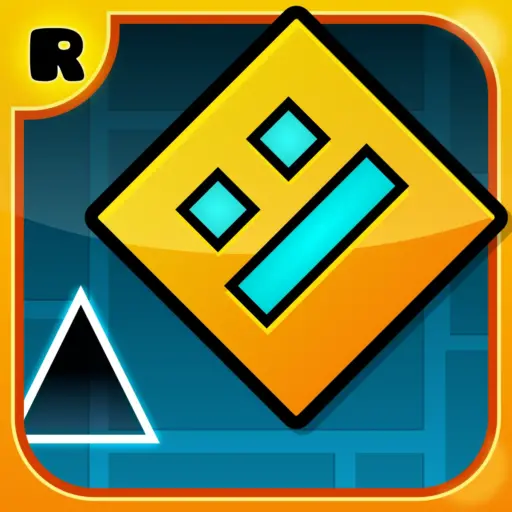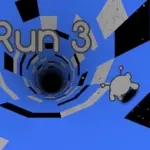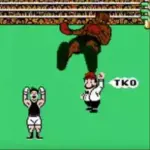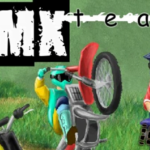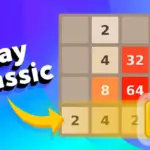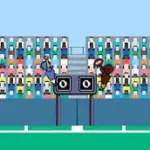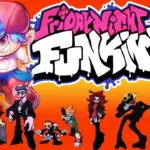The manga series Overclock has captivated readers with its intricate exploration of power dynamics in a technologically-advanced society. As fans dive deeper into this cyberpunk world, the complex relationships between characters and factions reveal thought-provoking themes about control, rebellion, and the human spirit. This article breaks down the key power structures and dynamics at play in Overclock, examining how they drive the narrative and resonate with manga enthusiasts.
The Technological Hierarchy
At the core of Read Overclock Manga Free Online power dynamics is the technological hierarchy that permeates every aspect of society. The manga’s world is divided into distinct tiers based on citizens’ access to and mastery of advanced cybernetic enhancements:
The Elite “Overclocked”
At the top of the hierarchy are the “Overclocked” – individuals with the most cutting-edge neural implants and body modifications. These elites wield immense influence through their augmented abilities and connections to the ruling technocracy. The protagonist Akira’s journey from a low-tier citizen to infiltrating this upper echelon forms a central conflict, challenging readers to consider the ethics of such stratification.
The Corporate Middle Class
Below the Overclocked are corporate workers and middle-class citizens with moderate enhancements. This group’s struggle to climb the technological ladder while retaining their humanity creates compelling drama. Characters like Yuki, torn between loyalty to her corporate employers and sympathy for the resistance, embody the moral quandaries faced by this segment of society.
The Unaugmented Masses
At the bottom are those unable to afford or unwilling to adopt cybernetic upgrades. These “unaugmented” citizens face discrimination and limited opportunities, fueling resentment and resistance movements. The manga’s portrayal of this underclass adds depth to its exploration of inequality and social justice themes.
Factions Vying for Control
The power dynamics in Overclock extend beyond individual hierarchies to encompass competing factions, each with its own agenda:
The Technocratic Government
The ruling technocracy maintains its grip on power through surveillance, information control, and technological superiority. Their vision of a “perfect” society achieved through human augmentation drives much of the conflict. The government’s internal power struggles and hidden agendas provide rich material for political intrigue subplots.
Corporate Conglomerates
Massive corporations wield significant influence, often operating above the law. Their competition for market dominance and technological breakthroughs shapes the manga’s world. Characters navigating corporate espionage and power plays offer thrilling cyberpunk action sequences that manga fans adore.
The Resistance Movement
Underground groups fight against the established order, ranging from peaceful activists to violent revolutionaries. The diverse motivations within the resistance – from preserving human purity to achieving a more equitable distribution of technology – add nuance to the manga’s exploration of rebellion and social change.
Personal Power Dynamics
Beyond the larger societal structures, Overclock delves into personal power dynamics that resonate with readers:
1. Mentor-Student Relationships: The bond between Akira and his mysterious benefactor Dr. Tanaka explores themes of knowledge transfer, trust, and betrayal.
2. Romantic Entanglements: Love interests from different factions create emotional conflicts that test characters’ loyalties and values.
3. Family Ties: Storylines involving separated families and generational conflicts add emotional depth to the power struggles.
These interpersonal dynamics ground the manga’s grand themes in relatable human experiences, allowing readers to connect more deeply with the characters and their motivations.
Symbolism and Artistic Representation
Overclock’s artists employ visual storytelling techniques to reinforce the power dynamics at play:
1. Cybernetic Aesthetics: The design and complexity of characters’ technological enhancements visually represent their place in the social hierarchy.
2. Environmental Contrasts: Stark differences between sleek, high-tech areas and run-down slums emphasize societal divisions.
3. Action Sequences: Dynamic fight scenes showcase the physical manifestation of power imbalances, with augmented characters displaying superhuman abilities.
4. Facial Expressions and Body Language: Subtle artistic choices in character depictions convey shifting power dynamics in interpersonal interactions.
These visual elements work in harmony with the narrative to create a rich, immersive experience that manga fans can analyze and appreciate on multiple levels.
Themes and Commentary
Through its exploration of power dynamics, overclockmanga.com tackles several thought-provoking themes:
1. The Ethics of Human Enhancement: The manga raises questions about the limits of technological augmentation and its impact on human identity.
2. Social Mobility and Inequality: The struggle of characters to rise above their assigned “tiers” reflects real-world issues of class and opportunity.
3. Information Control and Privacy: The government’s surveillance state and corporate data mining practices mirror contemporary concerns about digital privacy.
4. The Nature of Humanity: As characters grapple with the blurred lines between human and machine, readers are challenged to consider what truly defines us as human.
These themes elevate Overclock beyond simple entertainment, encouraging readers to engage with complex social and philosophical ideas through the lens of an exciting cyberpunk narrative.
Impact on Manga Culture
Overclock’s nuanced treatment of power dynamics has made a significant impact on manga culture:
1. Fan Theories and Discussions: The intricate power structures have spawned countless online debates and fan theories, fostering a vibrant community of engaged readers.
2. Cosplay and Fan Art: Characters representing different tiers of the technological hierarchy have become popular subjects for creative fan expressions.
3. Genre Influence: Overclock’s success has inspired a new wave of cyberpunk manga exploring similar themes of technology and social stratification.
4. Critical Acclaim: The manga’s sophisticated treatment of power dynamics has earned praise from critics and helped elevate the perception of manga as a medium for serious storytelling.
Conclusion
The intricate power dynamics in Overclock serve as the backbone for a compelling narrative that resonates with manga fans on multiple levels. By weaving together societal structures, factional conflicts, and personal relationships, the series creates a rich tapestry that invites readers to contemplate their own place in an increasingly technology-driven world. As the story continues to unfold, fans eagerly anticipate how these power dynamics will shift and evolve, driving the characters and plot towards an electrifying conclusion.
We’d love to hear from you! How has Overclock’s exploration of power dynamics impacted your reading experience? Share your thoughts and favorite moments in the comments below, and join the discussion with fellow manga enthusiasts!
